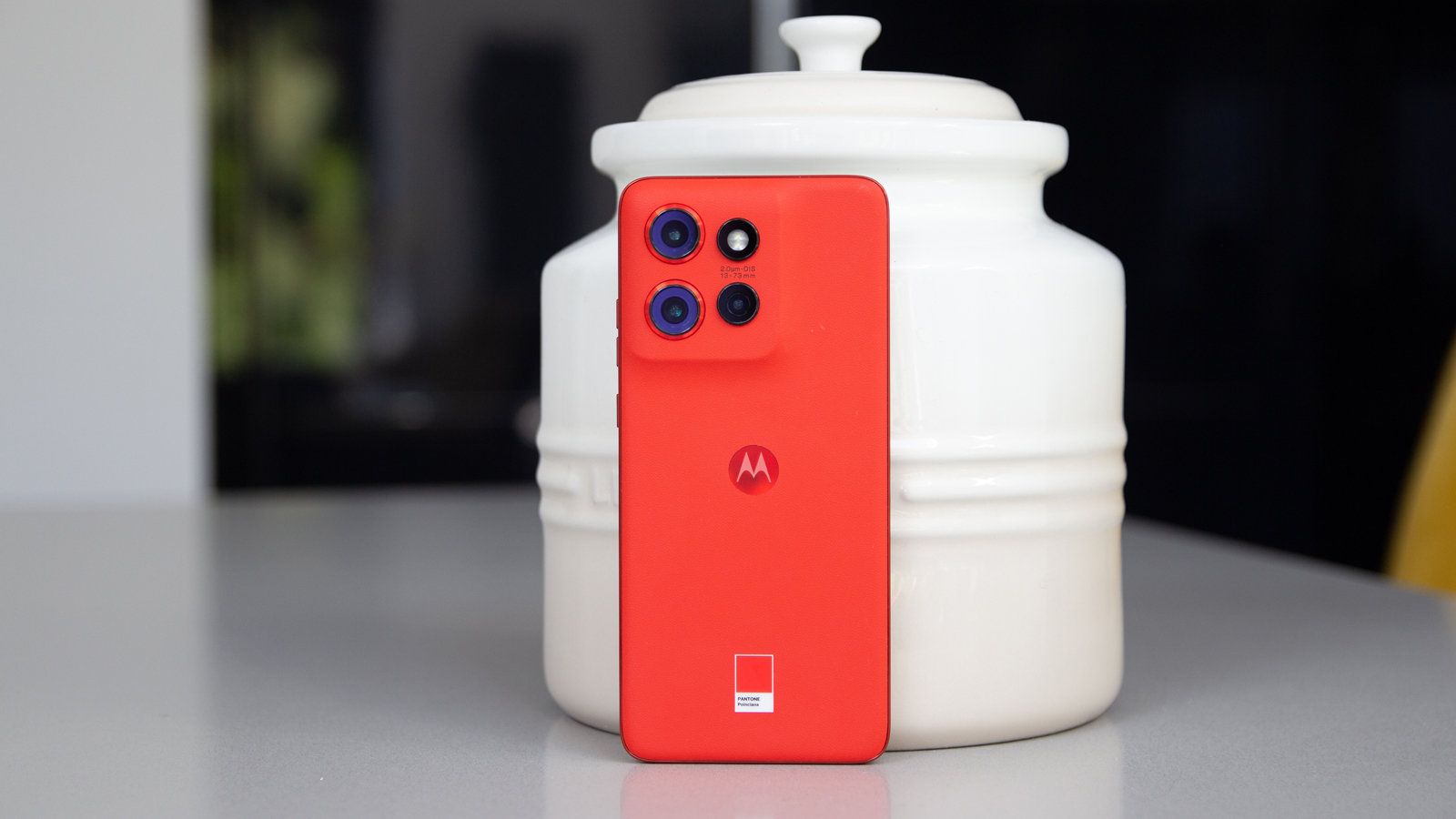
Motorola has been enjoying something of a boom recently, producing some great phones not only in the folding Razr line, but in the Edge family too. The company seems to have found its place, not fighting to best its flagship rivals, but to offer a range of attractively priced alternatives.
The challenge, it seems, is differentiating between a burgeoning number of models. The Edge 50 Ultra tops the range, then there’s the Edge 50 Pro, the Edge 50 and Edge 50 Fusion, and finally the Edge 50 Neo on review here. The names don’t really mean much at first glance, but the Edge 50 Neo manages to elbow itself into a mid-range position of being an attractive and affordable – but also a slightly more compact device.
But more importantly, it feels like Motorola is really throwing everything at this compact phone. The Edge 50 Neo is the epitome of luxury at the mid-level – an unexpected shining star for its class.
Motorola Edge 50 Neo: Pricing & availability
The Motorola Edge 50 Neo launches at £399.99 / AU$699 / €499 and is available now. There's no word on US pricing or availability, where Motorola's family of phones is altogether different.
The Edge 50 Neo is more expensive than its Edge 40 Neo predecessor, while the Moto Edge 50 Fusion seems to have received a slight discount to create a bigger gap between these models. That seems about right: the Edge 50 Fusion is more closely aligned with the old Edge 40 Neo, with this latest model taking some steps forward into a new space of its own.
Motorola Edge 50 Neo review: What’s new?
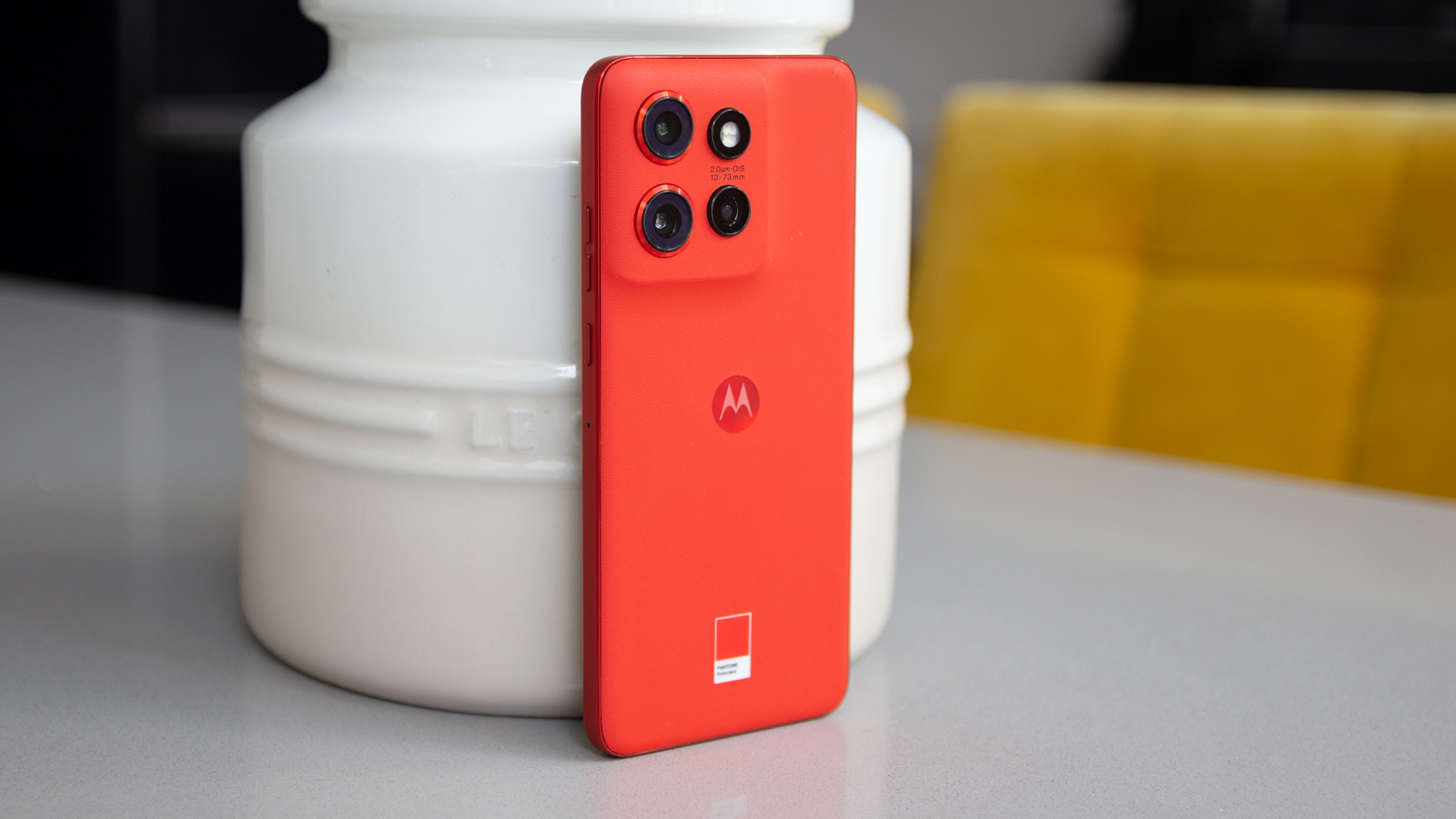
The Edge 50 Neo replaces the Edge 40 Neo, but also has to navigate its way around the cheaper Edge 50 Fusion. The new Neo is more compact than either of those phones, moving to a 6.4-inch display, with a resolution that's also higher. It's a flat rather than curved-edge display, too, with variable refresh rate possible and a punchy peak brightness, so is significantly more capable than the other two models.
As a result of being smaller, the battery also has a lower capacity, but it sits on a powerful mid-range platform, the MediaTek Dimensity 7300, which is technically a little more capable than the Qualcomm Snapdragon 7s Gen 2 of the Edge 50 Fusion – and a step forward from the Dimensity 7030 of the older Edge 40 Neo.
There's also a more enhanced camera system, with the addition of a third lens, so you gain a 3x optical zoom on this model. That's a big part of why this phone is positioned as a fully-featured yet compact offering compared to those older devices mentioned – and that's what makes it exciting.
Motorola Edge 50 Neo review: design & display
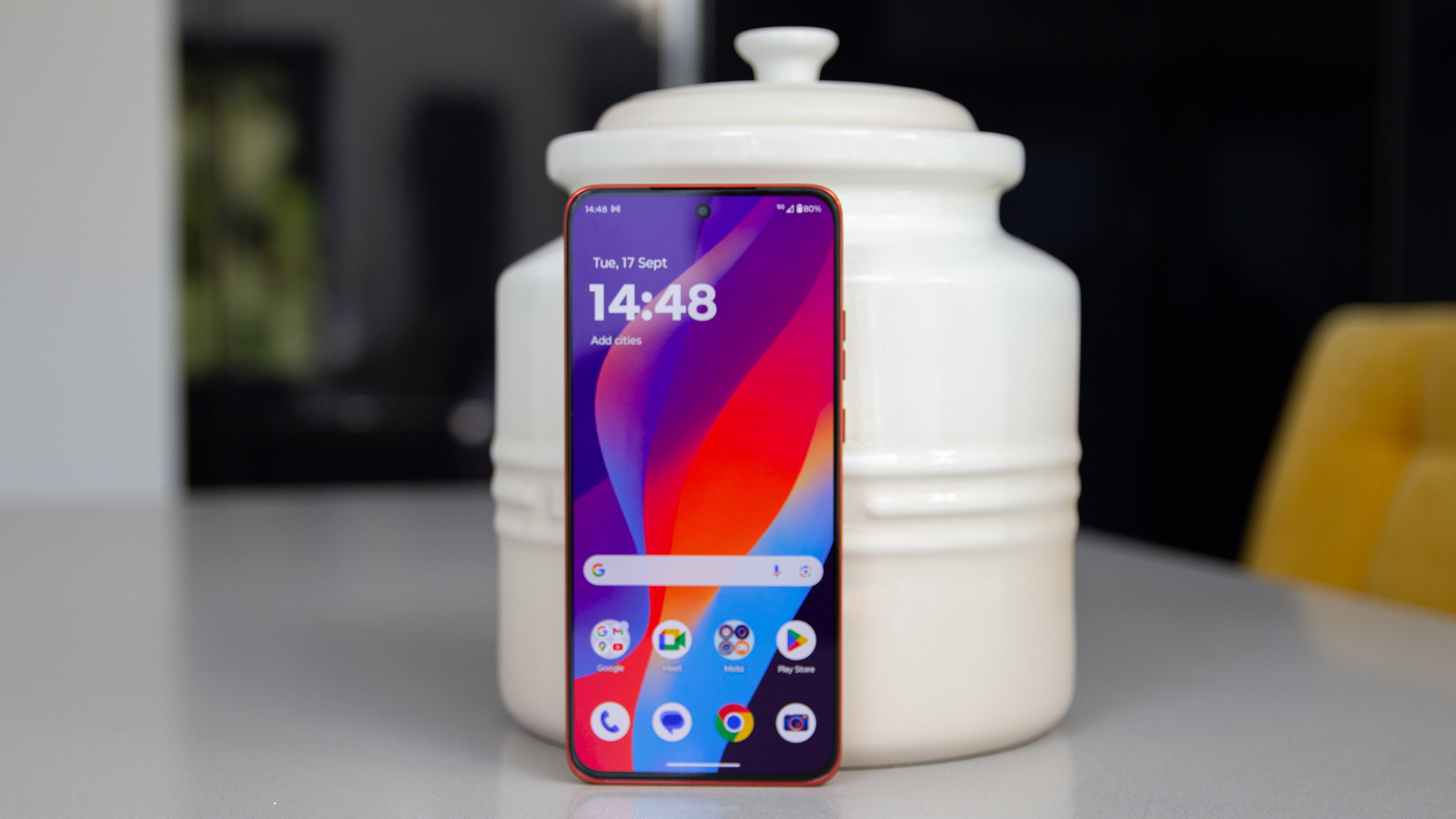
Motorola’s phones are enjoying the trickle-down effect, where devices that would have once been plastic are now found with a vegan leather finish. That’s true of some of the entry-level devices from the entry-level Moto G family, but also of the Edge 50 Neo. The result is surprisingly premium, making this phone feel like something more special than its asking price suggests.
The vegan leather finish also isn’t limited to one colour – and the others available are far from conventional. Instead you have a selection of Pantone hues – Poinciana (pictured in this review), Grisaille (grey), Lattè (tan) and Nautical Blue, which is lovely and vibrant. At only 8.1mm thick, the vegan leather finish provides plenty of grip and it ages well, as when it picks up a scuff it just adds character.
The flat display reaches to the squared edges, with Motorola offering a design that’s not too distant from the likes of the Pixel 9 or Apple iPhone 16 around the edges. It’s a great size, with the 6.4-inch display making this phone more compact than many in this price bracket.
What’s interesting about this display is that it’s surprisingly capable given this phone’s affordability. It’s an OLED display, so nicely vibrant when displaying your content, but it also has an impressive 3000 nits peak brightness. That is a real boost for outdoor visibility and especially for high dynamic range (HDR) content with the power to make highlights shine through. It's also brighter than Motorola's top phone, the Edge 50 Ultra.
Some might find the display a little too saturated out of the box. It comes with the "Vivid" mode on by default, but I found that "Radiant" was a little less aggressive on the eyes. Regardless of your preference, it's super contrasty and looks rich and vibrant no matter what you choose.
It’s also an LTPO display, meaning there’s an adaptive refresh rate from 10-120Hz, which is rather rare on a phone at this level. By contrast, highlighting its slightly more affordable position is the Gorilla Glass 3 finish – this is a couple of generations old, so not the latest when it comes to scratch resistance. There's an always-on display for the lock screen, which again is something less common on an affordable phone.
The words "Dolby Atmos" are emblazoned on the frame of the Neo – as they are on many Motorola phones – and there are stereo speakers. But the impact of Dolby Atmos' apparent virtual surround is lessened on this device because the bass delivery from the speakers isn't great. Switching on spatial audio does make things a little wider, but not by a huge degree.
Elsewhere the phone hits good protection levels, with an IP68 rating for dust and water, as well as meeting MIL-STD 810H drop protection. That sees the Edge 50 Neo ticking a lot of boxes for seemingly few compromises. Not many other brands can claim this at this level.
Motorola Edge 50 Neo review: performance & battery

Where the Edge 50 Neo marks itself out as a mid-range phone is in the core hardware. Motorola has turned to MediaTek for the power, with Dimensity 7300 backed by 8GB or 12GB RAM. This hardware is recent, a step down from the flagship experience that you’d get from a Dimensity 9000 series chip, but still making for great day-to-day use across the board.
The performance is good for a phone at this price, too, able to play the latest games – and while the phone does warm up a little, I had no problem putting in the hours on Call of Duty Mobile. It’s not as capable as a flagship device when gaming, but in day-to-day social media or browsing, you’ll not notice much of a compromise.
There isn’t an especially huge battery in this phone: at 4310mAh it’s perhaps a smaller capacity than you might expect, but one of the saving factors is that it supports 68W fast-charging. This is double the charging rate found in something like the iPhone or even latest Google Pixel 9, meaning you can charge with a quick blast. Unlike the Edge 50 Ultra, there's no charger in the box though – which is pretty commonplace these days.
The downside of fast-charging is that it ages the battery faster – and with Motorola now offering 5 years of software updates, it might be worth considering how often you choose to charge at those rates. There is an "optimised charging" function that learns how you charge your phone and will then charge to 80% and cease charging, only putting in the final top-up just before you (theoretically) disconnect your phone.
This is common to a number of brands – including the Google Pixel's "adaptive charging", for example – and is a good way to manage your battery health. The Neo's battery life is pretty good, though, and I found that I had no problems getting through a day with this device. Those long gaming sessions do tax the battery, but in typical use you’ll get to the end of the day no dramas.
One of the great things about Motorola’s phones is that they offer a relatively untouched Google Android software experience. Launching on Android 14 (with those 5 years of updates promised), the unskinned experience does attract some pre-installed apps from Motorola and other providers, which is a little irksome, but they are easily removed. Importantly, Motorola isn’t trying to duplicate the services offered by core Google apps as many rival brands do.
That results in an experience which I think is better than many rivals in this position. Brands like Xiaomi, Honor or Oppo tend to pull the software in a different direction. While Samsung offers a great experience, it's still fully reworked. Motorola just feels a little cleaner – and the bloat that is added is quickly and easily removed.
While Motorola is stepping up to 5 years of updates with this phone, Motorola's delivery of speedy updates remains to be seen. While there's the promise of longer software support, there's no track record of how quickly that will happen. So that's something to keep in mind.
Motorola Edge 50 Neo review: cameras
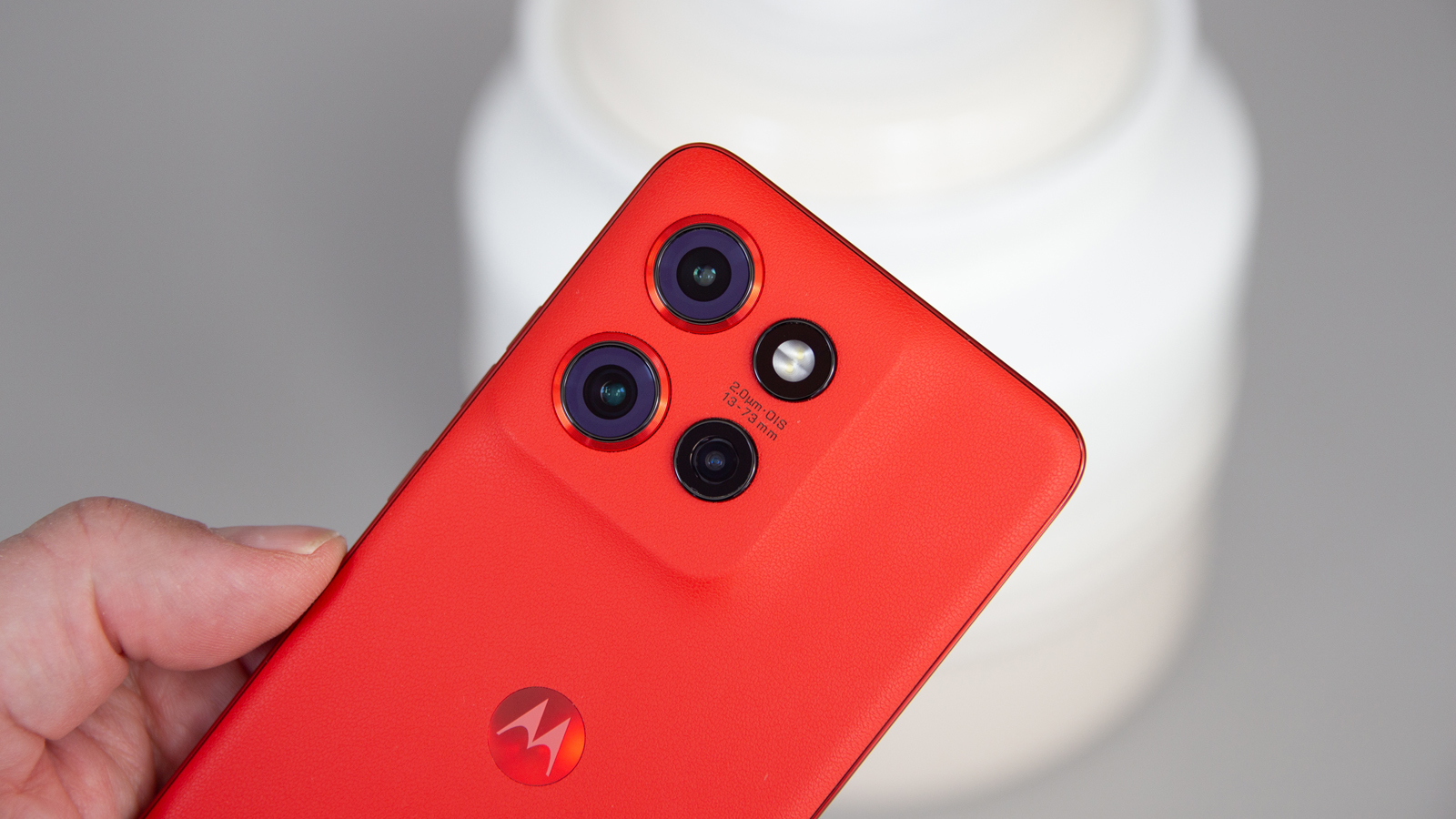
Motorola is really talking up the camera on the Edge 50 Neo, with a triple lens system offering a 50-megapixel main camera, a 13MP ultra-wide, and a 10MP optical zoom, which is a 3x telephoto. The front camera is 32MP, if you're big into high-resolution selfies.
The main camera will give you respectable shots in decent light and also powers a 2x digital/crop zoom. While the daylight performance is great, it’s not so good when it comes to dark conditions and can’t keep pace with the performance that you'll find in the best flagship phones.
There is a night mode, however, offering a longer capture and some processing to clean things up – from which you can get some pretty respectable shots. This only really works on the main camera, though, as the performance from the ultra-wide or zoom in low-light isn't very impressive.
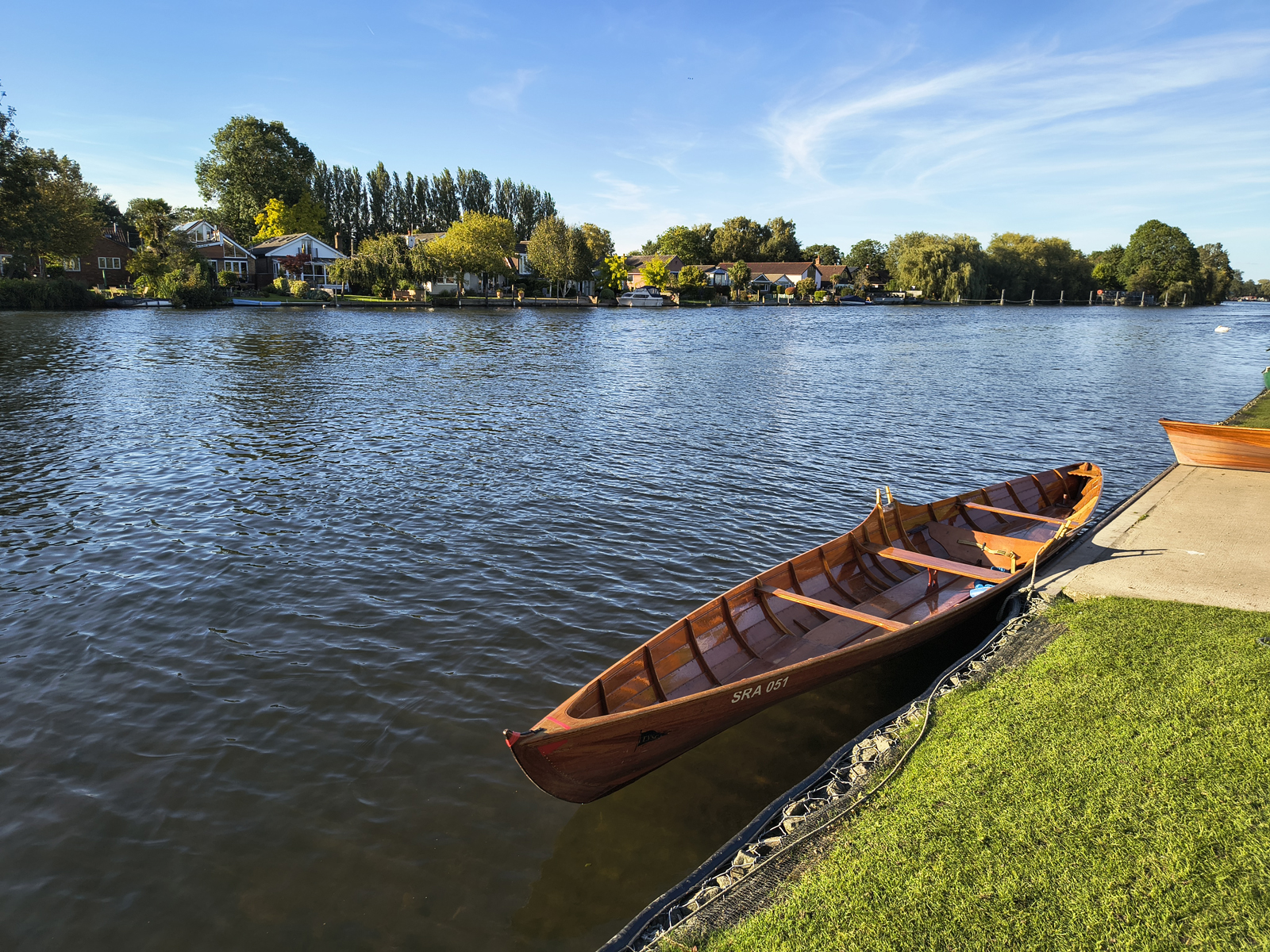

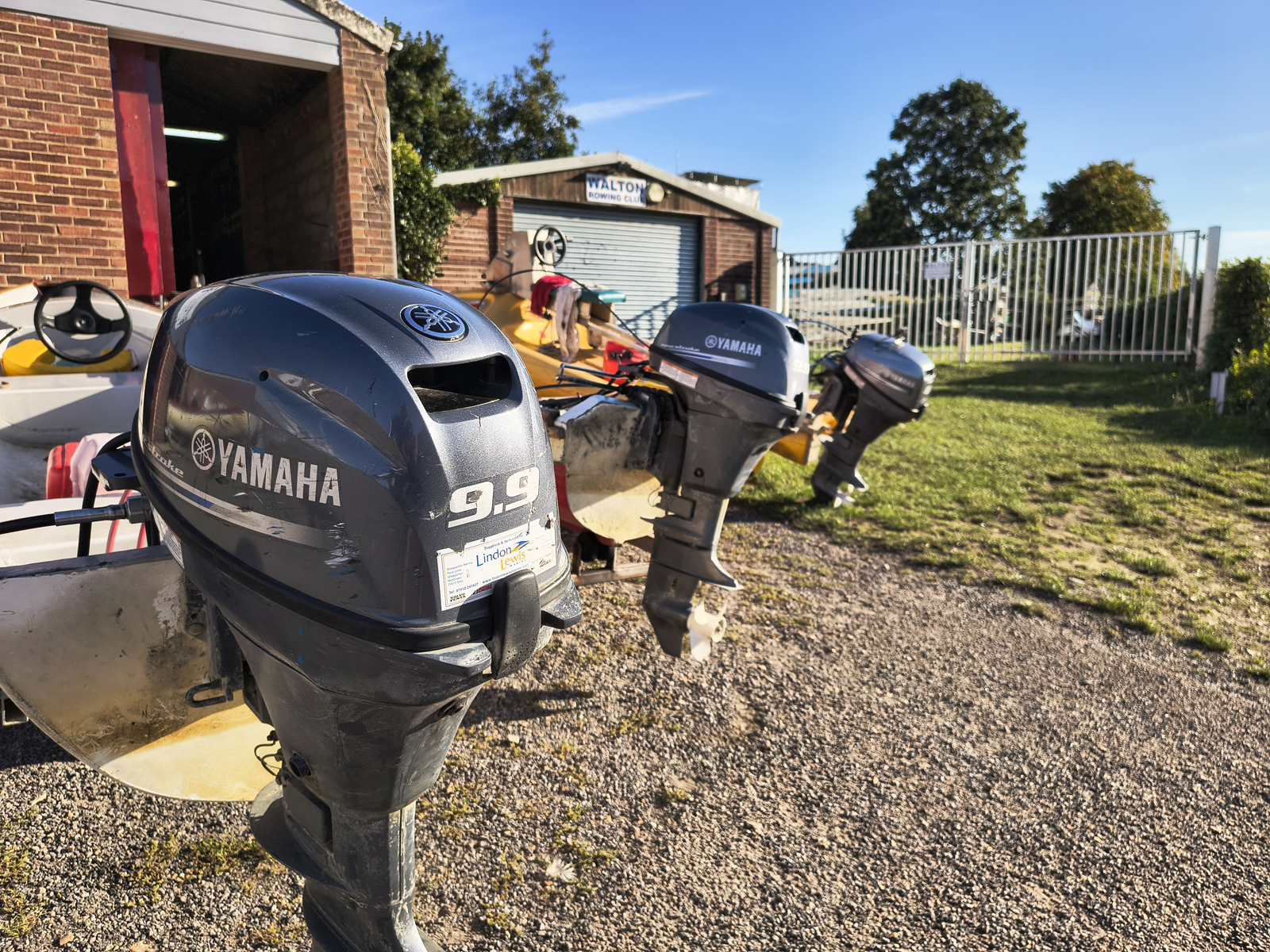

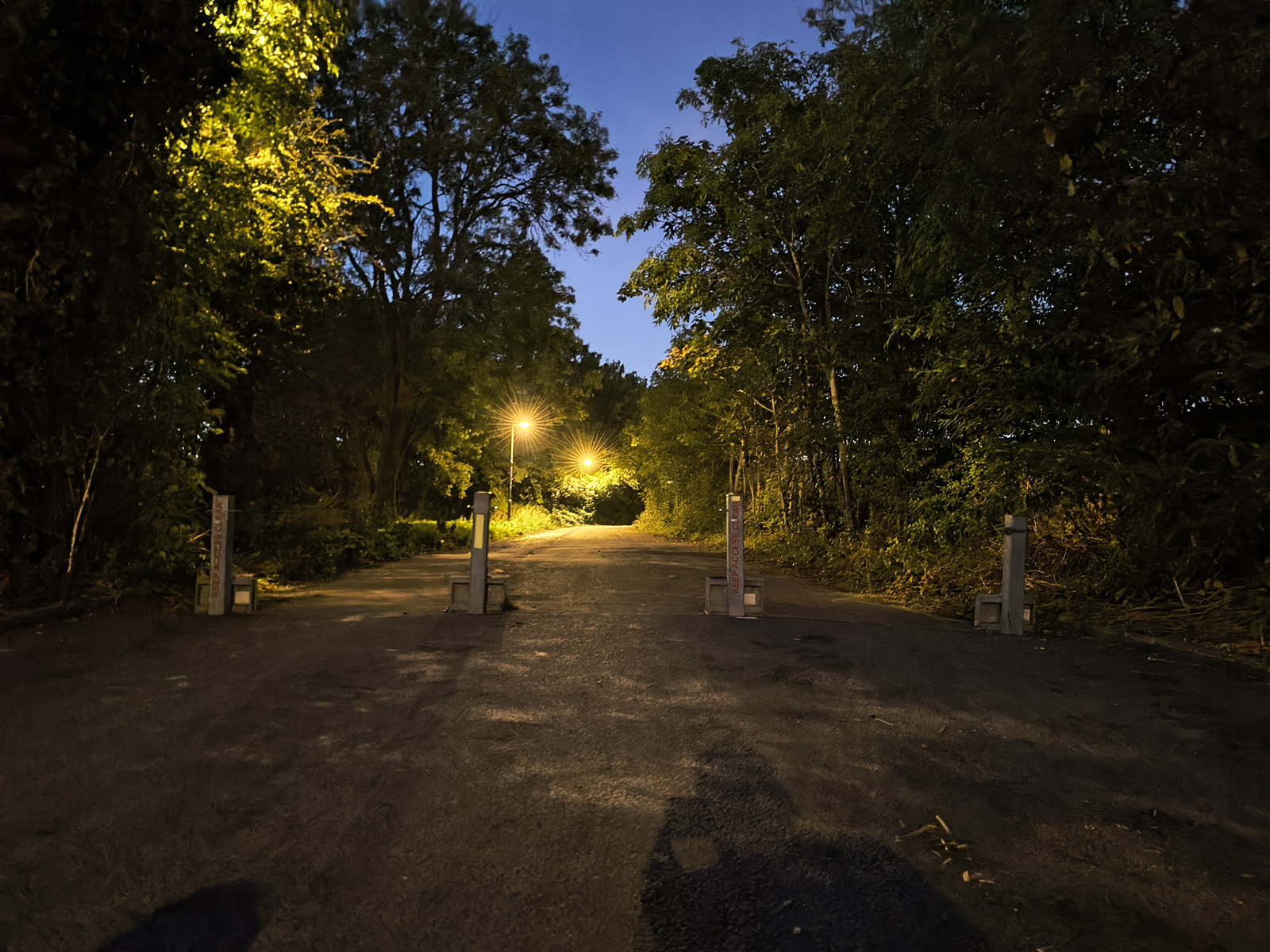


The addition of that 3x optical zoom is something of a bonus on this level of device. That's great, but I can't pretend that it has the skill that higher-positioned devices offer. Why? Because it’s slow to capture.
I took a number of photos where the thumbnail was what I expected, but the photo itself was captured a second later and blurry because I was moving and the camera shutter hadn't fired as I'd expect. There's also a noticeable delay between pressing the 3x button in the app's viewfinder and the camera actually switching to that lens. The best advice is to be slow and deliberate but it highlights the limitations of this system.
There’s up to 30x digital zoom, but like most of such systems it doesn’t give very good results. I found the front-facing camera to be pretty good and the portrait mode seems to work well enough at finding subject edges.
The real takeaway here is that you’re getting a slightly more comprehensive camera system than you’d get on many phones at this price. Yes, it has limitations, but it's still a step beyond expectations all considered. If you're after the best camera in a mid-range phone then I’d still recommend the Google Pixel 8a, despite that not having a dedicated zoom lens.
Motorola Edge 50 Neo review: verdict
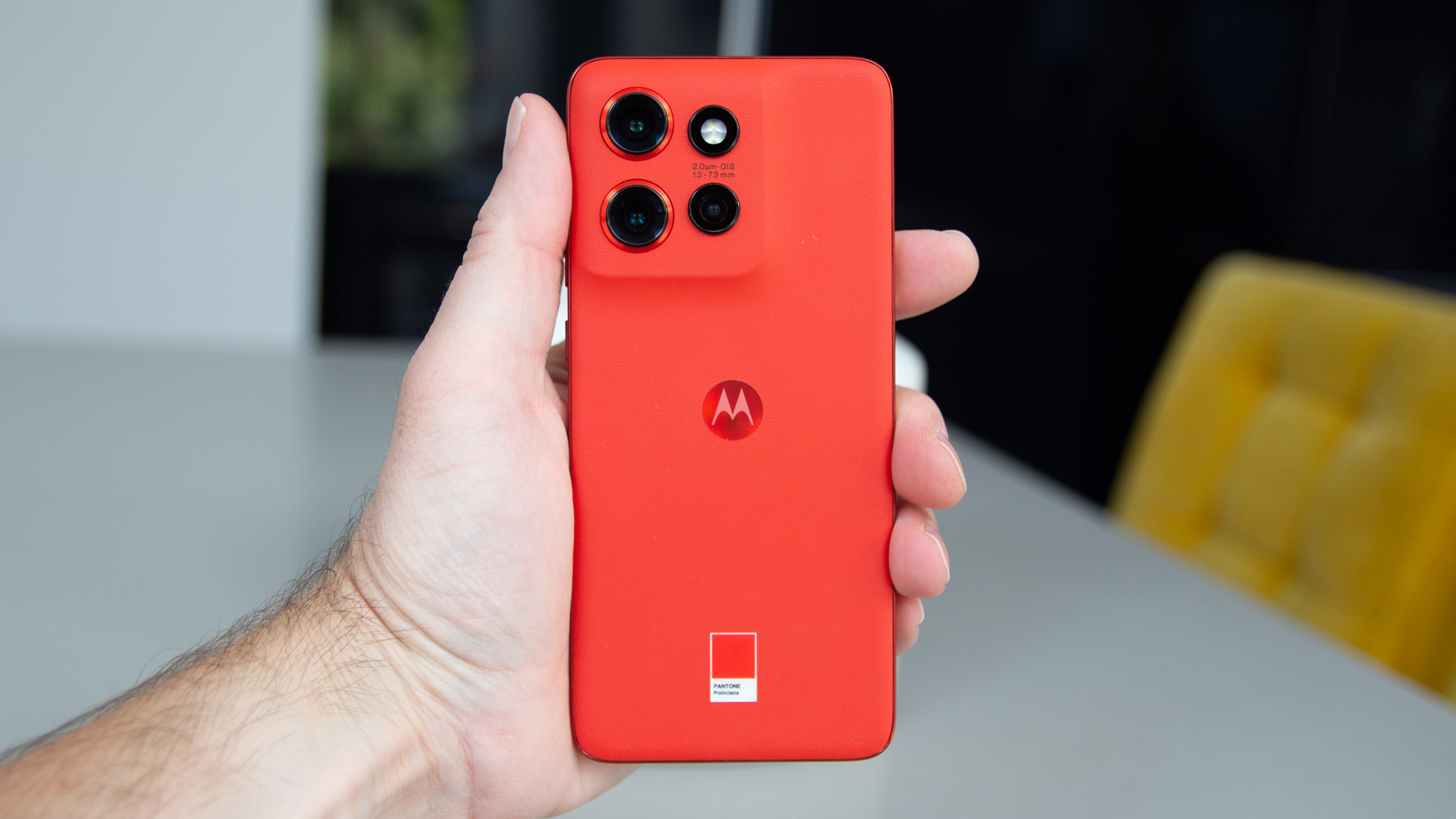
The Edge 50 Neo is either a statement of Motorola's commitment to more compact mid-range phones that are fully-featured, or it's a quirk. Some of the specifications jump out – such as the high-refresh and ultra-bright display – while the waterproofing and the zoom camera see the addition of features that don't always appear at this price point.
That makes the Edge 50 Neo something special. It's a mid-range device that stands out, with very little precedence from previous Neo devices. It offers great value for money and an experience and feature set that most simply can't at this price. On top of that, the vibrant colours and vegan leather finish just make it look great.
Also consider
There are a lot of phones to consider around this price range, but the Samsung Galaxy A55 would be a rival, despite being a little larger and a little more expensive. The generation-old OnePlus Nord 3 also falls into a similar price bracket now.
Alternatively, if you're craving that clean Google Android software experience with plenty of future support then the Google Pixel 8a is now only a little pricier than this Motorola, yet offers a better overall camera.







